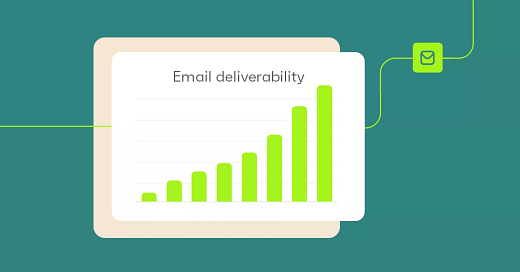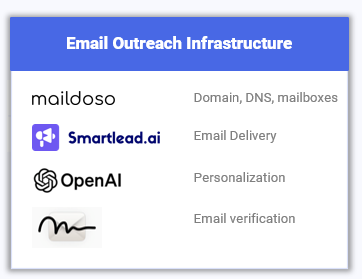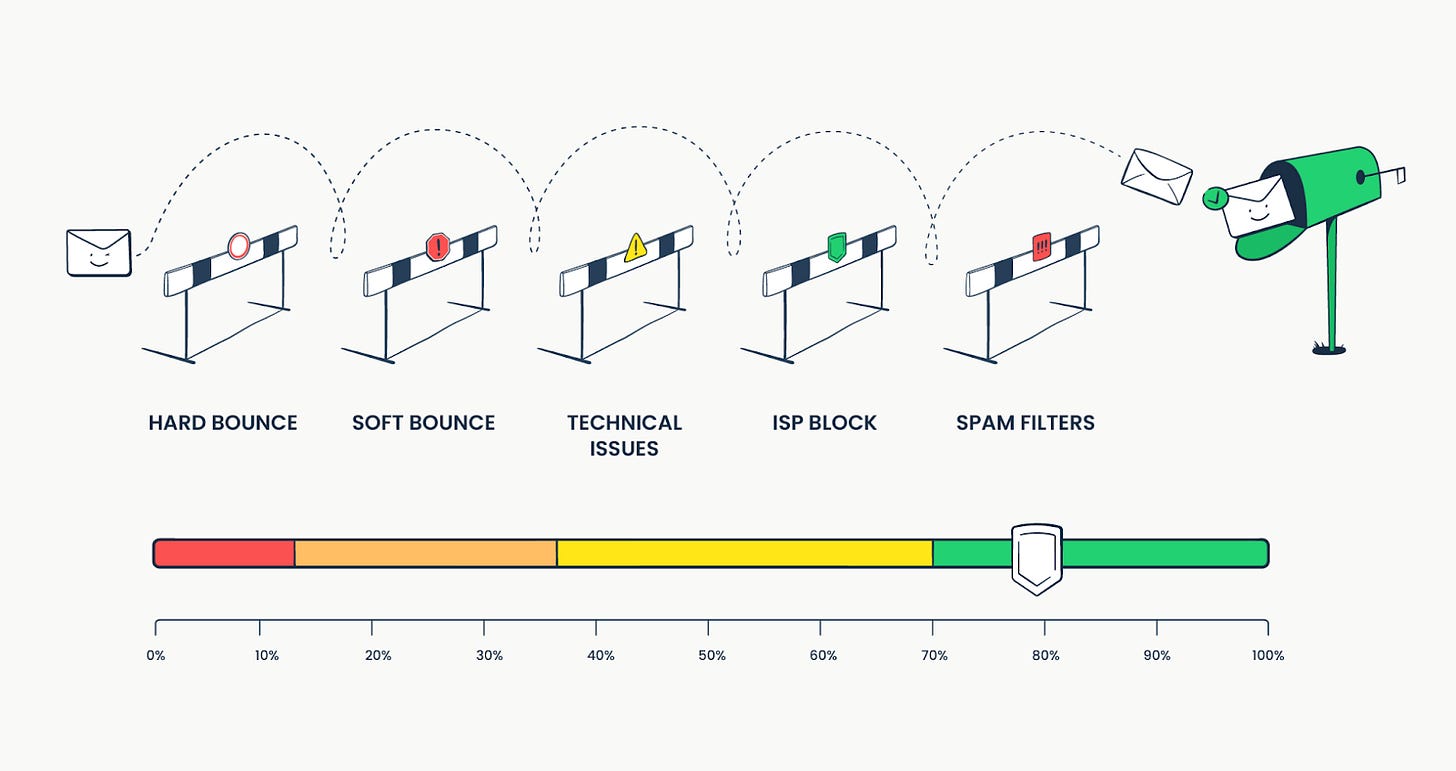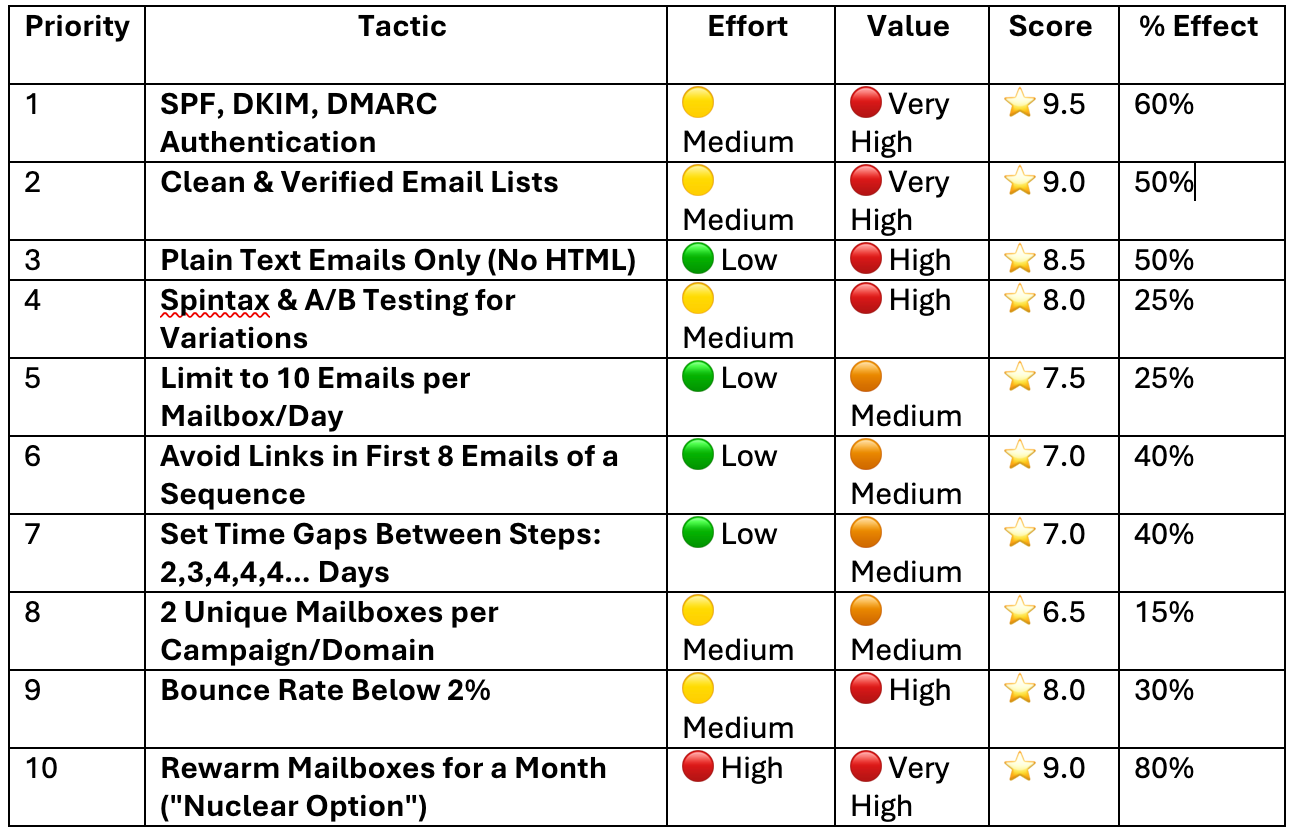Maximizing Outbound Reach: Our journey to 80% Deliverability in 4 weeks(2025)
From 42% to 80%: Our cold email deliverability success story
A few months into my role at ThriveStack, I hit a wall which most startups trying to scale come across at some point during their journey. We were deep into our outbound efforts, but something was off—our emails weren’t landing. Not metaphorically. Literally. They weren’t even showing up in prospect’s inboxes.
Coming from the scrappy GTM trenches of APAC MSMEs, I was used to lean strategies and manual effort. But international B2B SaaS? That was a different game. Long sales cycles, high-value deals, and one key requirement: outbound had to work—and scale.
At first, I relied on Lemlist. I’d personalize every message, add spintax, do pre-call research. It was impressive on paper. But unscalable in practice. I could feel I was pushing the limits of a small engine trying to tow a freight train.
Then came the shift.
The Wake-Up Call
My introduction to outbound SaaS involved collaborating with Thomas Nobbs, GTM Engineer at RevGen Labs, who guided our initial outbound efforts. Through this partnership, I gained a foundational understanding of the essential tools for today's AI-driven outbound strategies. This knowledge empowered us to initiate our own campaigns and further explore the evolving GTM landscape.
During my research I found Ryan Allis, CEO of SaaSRise, and reading his GTM methods it clicked: what I was doing manually wouldn’t hold up at scale. Around the same time, I came across Sean Jones, Founder of WolfScale, who emphasized something that stuck with me—AI had changed the outbound game. What used to take teams of SDRs and hours of research could now be done in minutes, with smart tools and automation.
We overhauled everything. Out went the manual grind; in came maildoso for our domains, Clay for accounts enrichment , ChatGPT 4o for personalisation, Smartlead for email and Heyreach for Linkedin—a full AI-powered stack.
But none of that mattered until we fixed one fundamental problem: Deliverability.
In this part of our blog series, I will be diving into the prerequisite for any successful outreach campaign only after which other components of the outbound infrastructure should be worked upon.
Deliverability: The Overlooked Power Move
You can have a perfect cold email.
Great subject line.
Strong CTA.
Doesn’t matter if it never reaches an inbox.
That was our reality. A full 45% of our marketing emails didn’t even make it past spam filters. Worse, poor deliverability was cutting our email ROI by half. On the flip side, implementing a few simple measures into our campaigns helped us land about 80% of the time in our prospect mailboxes.
Our turnaround started when we shifted focus from writing better emails to ensuring they were seen.
So let’s dive into what made our deliverability score go from a 4/10 to 8/10
What We Fixed (and How It Changed Everything)
Why Deliverability Comes First
Even the best cold email fails if it lands in spam. You can’t optimize subject lines or messaging if the email isn’t even seen.
Stats don’t lie:
40% of marketing emails never hit the inbox
Poor deliverability can slash ROI by up to 50%
Even a 10% bump can boost sales by 20%
For us, improving deliverability was the lever that made everything else click. Here’s the 10-part checklist we used—prioritized by impact.
1. Authenticate Your Domain
Uplift: +60%
SPF, DKIM, and DMARC are the holy trinity of email trust. They prove to inbox providers that you are who you say you are.
Without this? Your emails are marked as “possible scam.”
Tool tip: We used Maildo for Domain and mailboxes, and then SmartLead to use this infrastructure.
2. Clean Your Email Lists
Uplift: +50%
Invalid addresses kill your sender score. Run your prospect emails through email verification tools.
High bounce = blacklists.
Use: Mail.so, NeverBounce, ZeroBounce
3. Go Plain Text
Uplift: +20%
HTML looks flashy but flags spam filters. Plain text feels human and gets delivered.
It’s not sexy—but it’s effective.
4. Use Spintax & A/B/C Testing
Uplift: +25%
Spintax adds natural variation. A/B/C testing helps you find what works. Together, they dodge filters and sharpen results.
Tools: Lemlist, Smartlead, Instantly
5. Limit Initial Volume
Uplift: +20%
Start slow: 5-10 emails/day per mailbox.
Gradually ramp up to 20-30 emails/day per mailbox. Sudden spikes raise red flags with your email provider. Google and Microsoft have smart systems to mark these as spam.
Consistency = trust.
6. Don’t Use Links in Early Emails
Uplift: +18%
Links are a red flag in cold outreach. Wait till you’ve earned attention—often by email sequence #4,5.
Emails with links are 50% more likely to land in spam.
7. Space Out Your Cadence
Uplift: +15%
Natural pacing mimics human behavior. Our winning sequence:
Day gaps: 2, 3, 4, 4, 5, 5, 6...
This raised our inbox placement by 30% and cut complaints by 15%.
8. Dedicated Mailbox Pairs
Uplift: +15%
Each campaign = 2 mailboxes. Segmented volume protects domain health.
Validity research shows this can lift deliverability by 20%.
9. Keep Bounce Rate <2%
Uplift: +10%
Above 2%, you're in danger. Over 5%, and you're 75% more likely to get blacklisted.
Fix list hygiene before you scale.
10. When Deliverability Plummets: The Mailbox Rewarm Solution
Uplift: Recovery Only
Even with best practices, deliverability can suddenly tank due to bounces, spam complaints, or algorithm changes. When your emails consistently hit spam despite your efforts, a more drastic step is needed: mailbox rewarming.
Understanding Mailbox Rewarming
Mailbox rewarming is a "reset" for your sending reputation. It involves gradually rebuilding trust with email providers by sending low volumes of emails to engaged recipients over time. This proves you're a legitimate sender of wanted content.
Leveraging Warm-up Tools & Engagement
Email warm-up tools can automate this by sending/receiving emails and simulating positive engagement (opens, clicks, "not spam"). This builds sending history and positive signals. However, rely on these tools responsibly, combining them with genuine engagement and valuable content.
Key Considerations for Rewarming:
Patience: Results take time.
Quality: Focus on engaged recipients and valuable content.
Monitoring: Track your sending stats and inbox placement.
Segmentation: Prioritize engaged contacts initially.
Relevance: Ensure your content is highly relevant.
The Result: Deliverability First, Scale Second
All of this added up. Once we fixed deliverability, everything else started clicking. Engagement improved. Replies increased. We were finally reaching the right people—and getting responses.
Outbound wasn’t a guessing game anymore. It was a predictable engine.
Looking back, this was the real pivot point. We often obsess over subject lines, personalization, and copywriting. But without solid deliverability, it’s all wasted effort. That’s why in our playbook, deliverability is the foundation.
In the next post, I’ll share how we scaled this approach with AI— adding a personal touch to ensure great reply rates.
Let us know what interested you most from our experiences.










